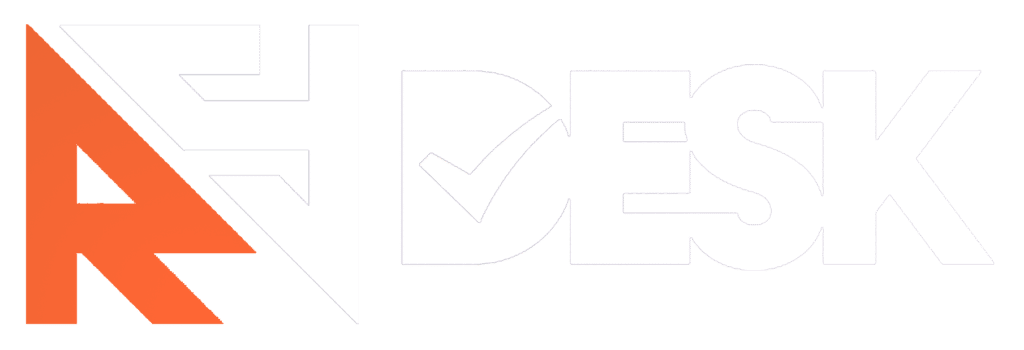If your ads and SEO are bringing the right visitors but sales still lag, your landing pages are underperforming. High-intent traffic needs fast, persuasive pages that remove friction and motivate action. In this guide, we unpack what best-in-class Landing Page Development Services include, how to evaluate providers, and the exact elements that lift conversion rates—while staying aligned with Google’s guidance on page experience and performance. We’ll also show how RyDesk approaches strategy, design, build, and optimization to turn clicks into qualified leads.
Why landing pages deserve a specialist, not “just web design”
General web design creates destinations. Landing page development engineers outcomes. Modern landing pages must:
Load quickly and remain stable while content renders (Core Web Vitals). (Google for Developers)
Deliver a great page experience across mobile, HTTPS, ad intrusiveness, and readability—complementing relevance in Google Search. (Google for Developers)
Match message and intent (especially for PPC), meeting Google’s editorial and destination standards. (Google Help)
A focused landing page practice ties UX, copy, analytics, and engineering together so every section has a measurable job to do.
What’s included in professional Landing Page Development Services
1) Research & strategy
Audience, offer, and message–match analysis (search queries, ad groups, and SERP context).
Heuristic review + funnel mapping to define one primary conversion and up to two supportive micro-conversions (e.g., “Download spec sheet,” “Start trial”).
Technical audit for page speed, responsiveness, and accessibility (Core Web Vitals & mobile ergonomics). (Google for Developers)
2) Conversion-first UX & information architecture
Above-the-fold layout that surfaces the promise, proof, and path to action.
Visual hierarchy based on how people actually scan pages (F-pattern and Z-pattern). (Nielsen Norman Group)
Sections tailored to objections (credibility, risk, complexity, price) and use-case navigation for ICP segments.
3) Persuasive copywriting
Clear value proposition, outcome-oriented subheads, and skimmable benefits.
Social proof (logos, quantified results, testimonials with attribution).
Compliance-friendly claims and transparent next steps.
4) Design systems & components
Modular, responsive components (hero, proof bar, feature grid, comparison, FAQ, footer).
Accessible color contrast, tap targets, and focus states.
Consistent brand typography and spacing scale for legibility on mobile.
5) Engineering & performance
Lightweight, semantic HTML; critical CSS; optimized images; script deferral; API calls minimized.
Built-in schema where relevant (Organization, Product/Service, FAQ).
Instrumentation for analytics & A/B testing with event naming that mirrors the funnel.
6) Launch, testing & iteration
QA on devices/browsers, form validation, bot/spam protection, conversion pixel checks.
Road-mapped tests (headline, proof placement, form length, CTA language).
Ongoing speed monitoring and Core Web Vitals tracking via Search Console. (Google Help)
Our landing page framework: sections that consistently lift conversions
H2: Above the fold — “Promise, Proof, Path”
Promise: clear outcome (“Cut onboarding time by 43%”)
Proof: concise trust signal (case metric, review count, client logo bar)
Path: primary CTA (“Book a 15-min demo”) + optional low-friction micro-CTA (“Watch 90-sec overview”)
H2: Friction removal
Short bullets that map to common anxieties: time to value, switching effort, integrations, pricing clarity.
H2: Social proof that means something
Replace generic testimonials with attributed quotes + specific results and context.
Add “before/after” mini-case to demonstrate the mechanism of value (not just the outcome).
H2: Visual explanation
Annotated UI shot or short loop illustrating the 2–3 core jobs-to-be-done.
Keep motion subtle and LCP-friendly; avoid blocking assets that harm load time. (Google for Developers)
H2: Offer clarity
Pricing teaser or ROI calculator; transparent trial/contract terms.
Qualify leads with brief persona switches (“I’m in SaaS / Healthcare / Manufacturing”) that adapt proof points.
H2: Conversion zone
Primary CTA repeated with supporting micro-conversion (download, email capture).
Add reassurance copy near the button (no credit card, cancel anytime, response SLAs).
Service models you can choose (and when to use each)
| Engagement Model | Best For | What You Get | Typical Timeline |
|---|---|---|---|
| End-to-end build | New offers, campaigns, or product launches | Strategy → UX → copy → design → development → analytics | 3–6 weeks for first launch |
| Optimization sprint | Existing page with traffic but low CVR | Research, heatmaps, A/B test plan, 1–2 high-impact variants | 2–4 weeks |
| Scalable system | Teams running many campaigns | Reusable components, design tokens, page templates, governance | 4–8 weeks setup |
Tip: If you already have traffic (PPC/SEO), an optimization sprint often yields faster ROI than a total rebuild—ship targeted variants first, then refactor.
Technical quality: why speed, stability, and mobile UX are non-negotiable
Google’s documentation is explicit: Core Web Vitals (loading, interactivity, visual stability) reflect real-world user experience and are used by Search systems. While relevance is still king, better page experience can be a tiebreaker when competing content is similarly relevant. Build processes should target strong CWV along with secure, mobile-friendly experiences and avoid intrusive interstitials. (Google for Developers)
For paid campaigns, Google also evaluates landing page experience—professional presentation, relevance, and ease of interaction—which affects Quality Score and costs. (Google Help)
How we bake this in:
Optimize LCP assets (hero image/video), reduce render-blocking resources, and keep CLS < recommended thresholds.
Defer non-critical scripts and lazy-load below-the-fold media.
Ship mobile-first CSS with accessible tap targets and typography.
If you’d like engineering help specifically on speed, RyDesk’s Page Speed Optimization service is built to help you pass Core Web Vitals without sacrificing design. Explore it here: Page Speed Optimization Agency.
Evaluating an agency for landing pages: a practical checklist
Message–match expertise: Can they align ad groups/keywords to bespoke page variants?
Research depth: Do they interview sales/CS to uncover real objections and value language?
Proof and specificity: Are case claims attributed and credible?
Testing discipline: Do they propose a test backlog with clear success metrics?
Performance chops: Can they show before/after CWV results from Search Console? (Google Help)
Analytics hygiene: Are events/naming consistent and decision-ready?
Governance: Do they provide templates/components so your team can launch new pages quickly?
You can scan RyDesk’s broader Web Development Services to understand how we combine strategy, engineering, and CRO in real client work.
Copy & design principles proven to help users act
Design for scanning: Users scan in F-shaped and Z-pattern flows; place key messages along those paths and keep first lines meaningful. (Nielsen Norman Group)
One job per section: Each block should answer one question—or remove one objection.
Specific > generic: Replace “fast, easy, secure” with quantified improvements, named integrations, and screenshots.
Call-to-value CTAs: “Get a tailored plan” outperforms “Submit” because it explains the outcome.
Form length tuning: Start with essentials; ask for extras once value is established (multi-step forms often win).
Analytics & experimentation: make every decision with evidence
Define success upfront: Primary conversion (e.g., demo booked), plus leading indicators (scroll depth, time-to-CTA, field drop-offs).
Use controlled experiments (A/B): Test one meaningful change at a time—headline clarity, social proof placement, or form step count.
Tie tests to economics: Prioritize variants that change time to value and perceived risk; they move conversion the most.
Monitor real-user performance: Field data in Search Console’s Core Web Vitals report catches issues that lab tools miss. (Google Help)
How RyDesk delivers high-converting landing pages
Discovery: We align offer, audience, and traffic sources.
Blueprint: Wireframes showing hierarchy and narrative (promise → proof → path).
Content: Senior copywriting focused on outcomes and objections.
Build: Lightweight, standards-based implementation ready for rapid iteration.
Launch & learn: Baseline analytics set; first tests queued.
Growth: Monthly CRO cycles layer in learnings from heatmaps, session replays, and sales feedback.
If you’re ready to discuss timelines and budget, request a tailored estimate: Get Price Quote.
When to choose a full redesign vs. optimize what you have
Choose a redesign if your page suffers from structural issues (confused offer, mixed intents, slow stack) or doesn’t meet basic page-experience guidance. (Google for Developers)
Optimize in place if your fundamentals are sound but the story is weak—start with copy, proof placement, and form friction, then refine speed.
For a broader package overview beyond landing pages, see Website Packages for Small Business.
Conclusion
Great landing pages are engineered—not improvised. They combine research-backed messaging, credible proof, and frictionless UX with fast, stable performance. Align with Google’s page-experience guidance, respect how users scan content, and ship a rigorous testing roadmap. Whether you need a conversion-ready page for a new campaign or a reusable landing page system, RyDesk can help you turn qualified clicks into qualified pipeline.
Frequently Asked Questions
How do Landing Page Development Services affect SEO as well as PPC?
Purpose-built landing pages improve relevance and page experience—two ingredients Google calls out in Search documentation and Ads policies. That can boost organic visibility (when content is similarly relevant) and improve paid performance by enhancing landing page experience. (Google for Developers, Google Help)
What Core Web Vitals targets should a landing page meet?
Aim for fast Largest Contentful Paint, responsive Interaction to Next Paint, and minimal Cumulative Layout Shift; these metrics are part of Google’s guidance for evaluating real-world user experience and are considered by Search systems. (Google for Developers)
Do I need multiple landing pages for different campaigns?
Usually, yes. Map variants to keyword clusters or audience segments to maintain message–match and improve relevance. This also makes testing cleaner and often reduces PPC costs through better landing page experience. (Google Help)


